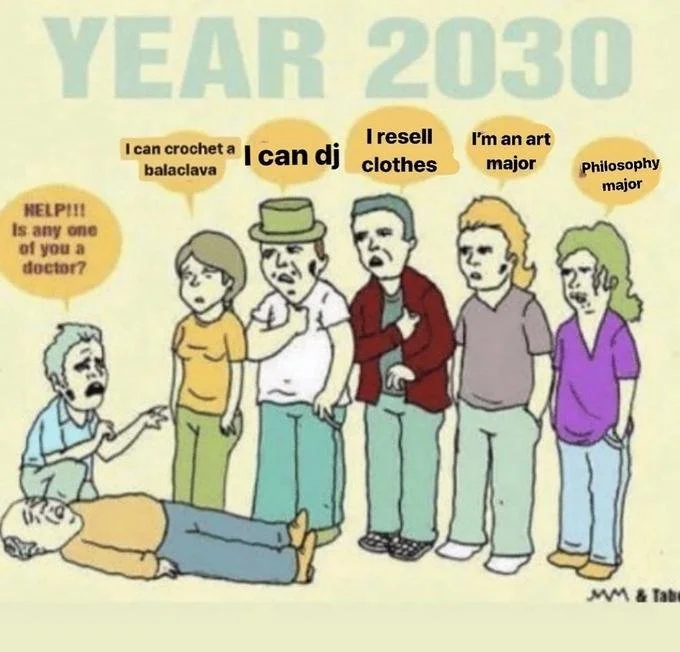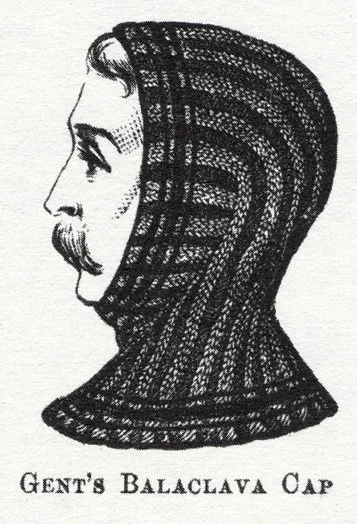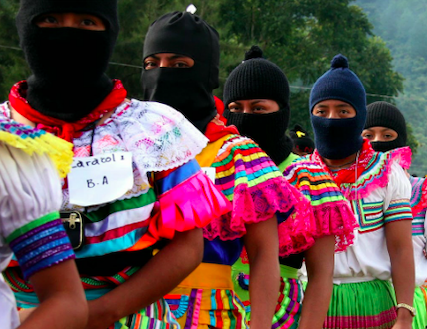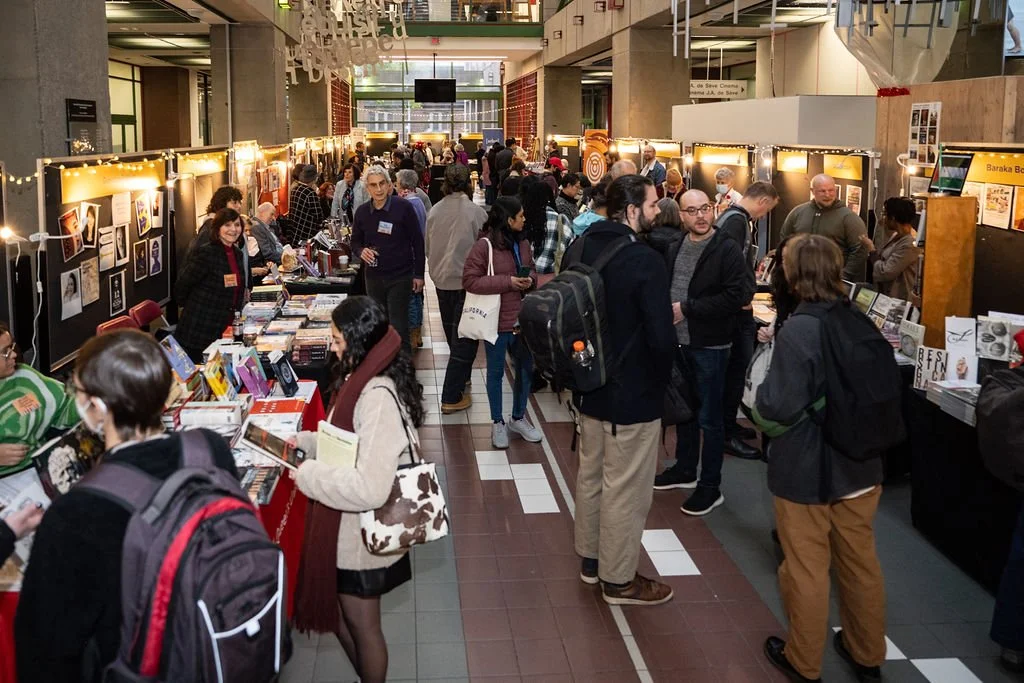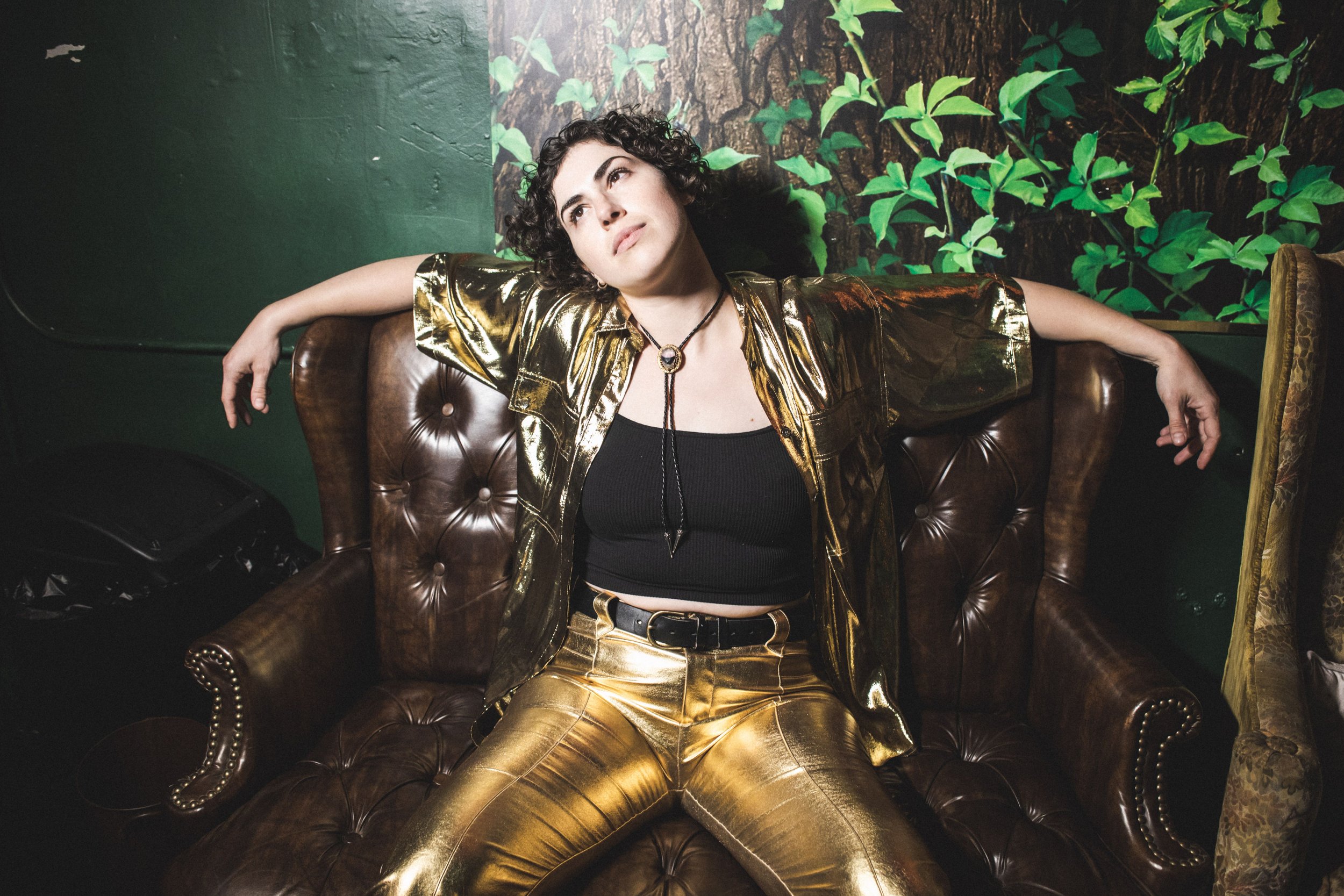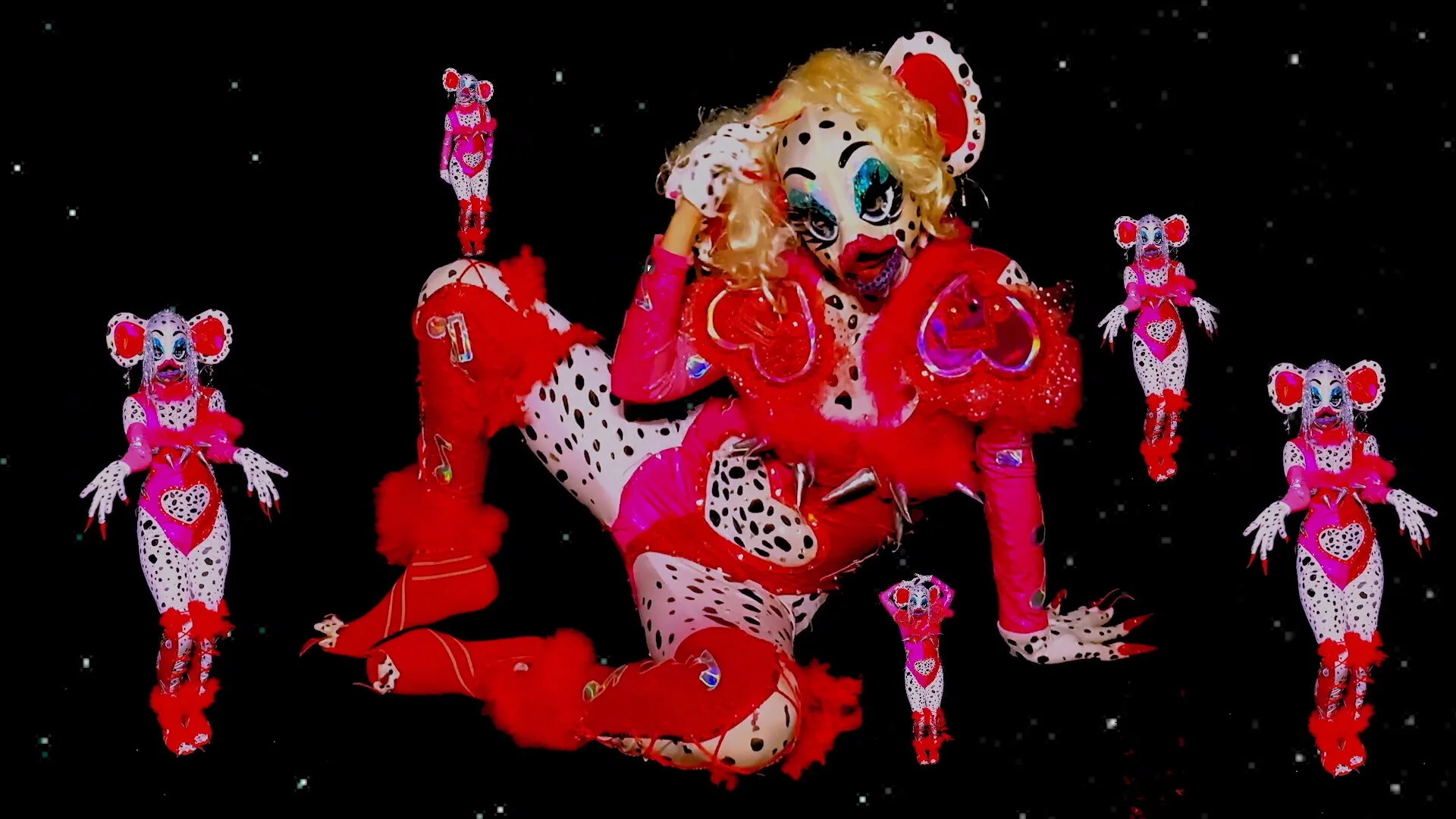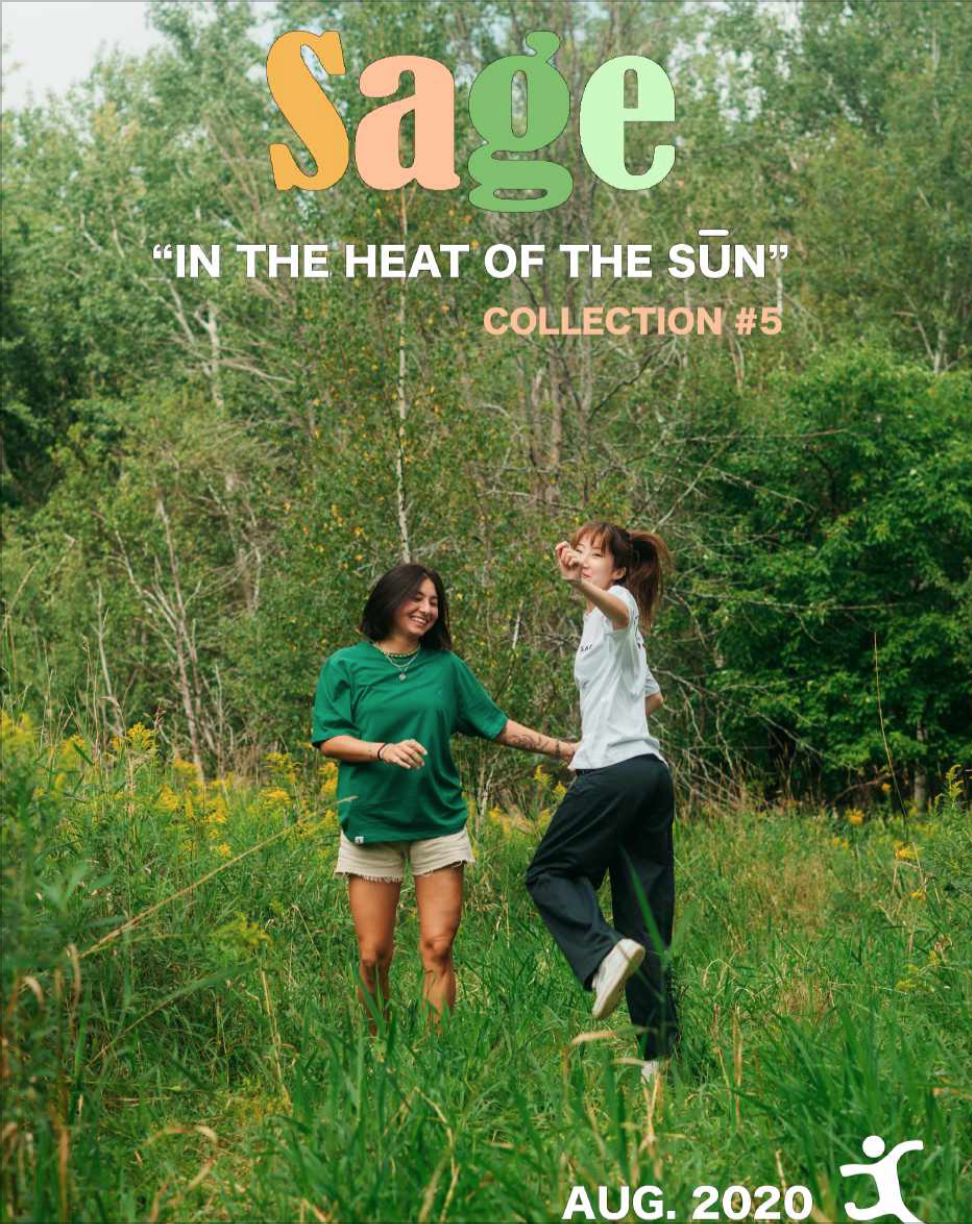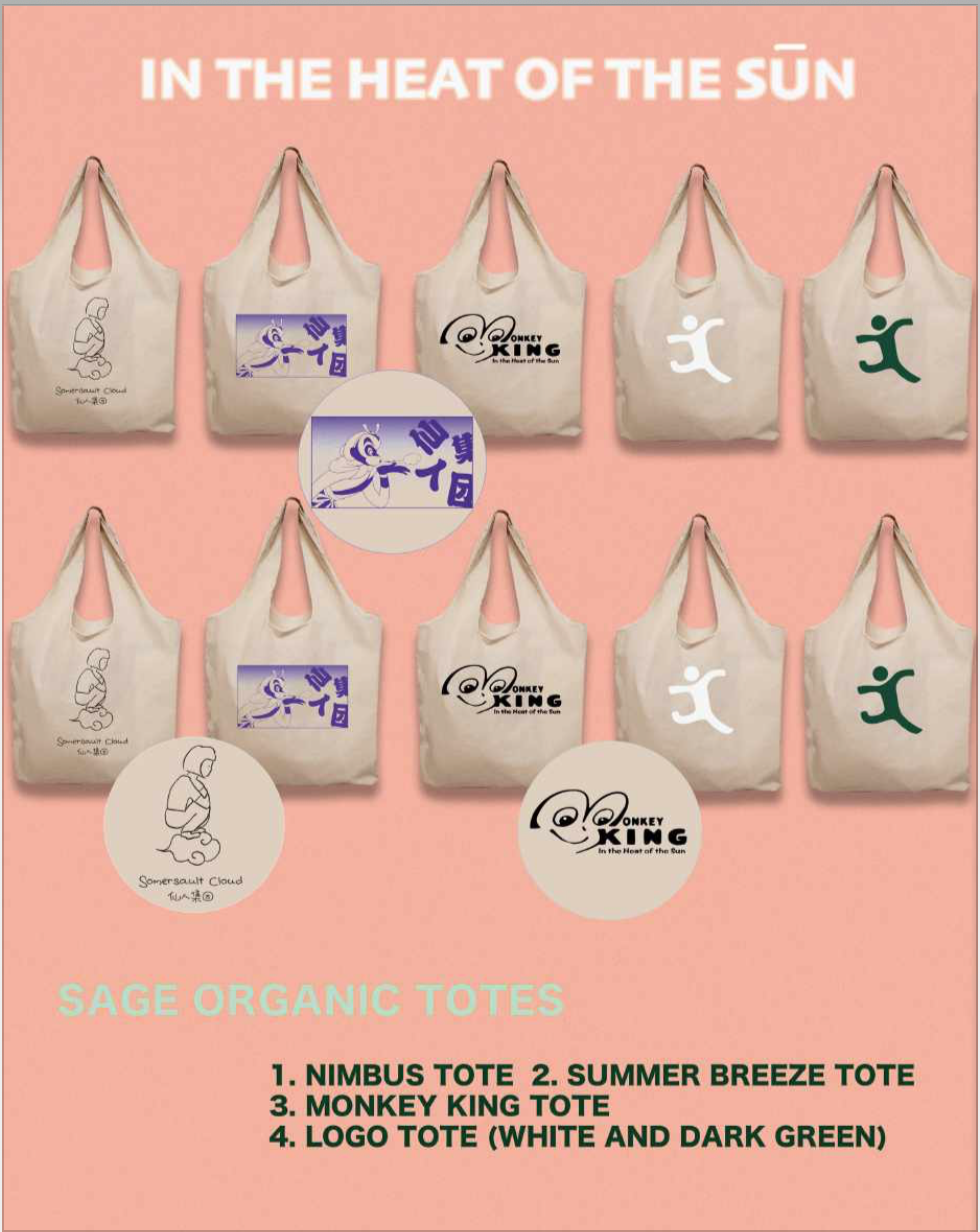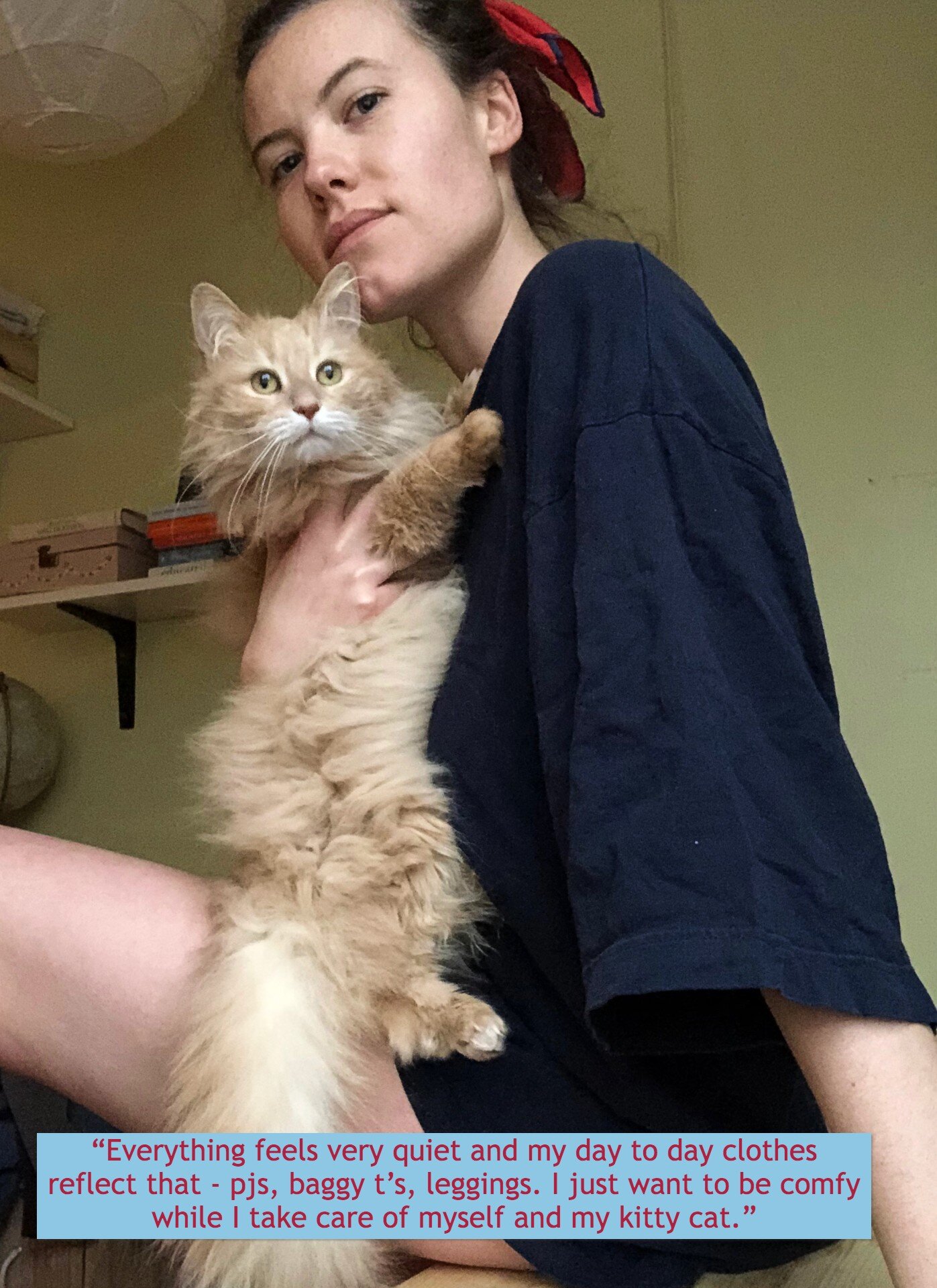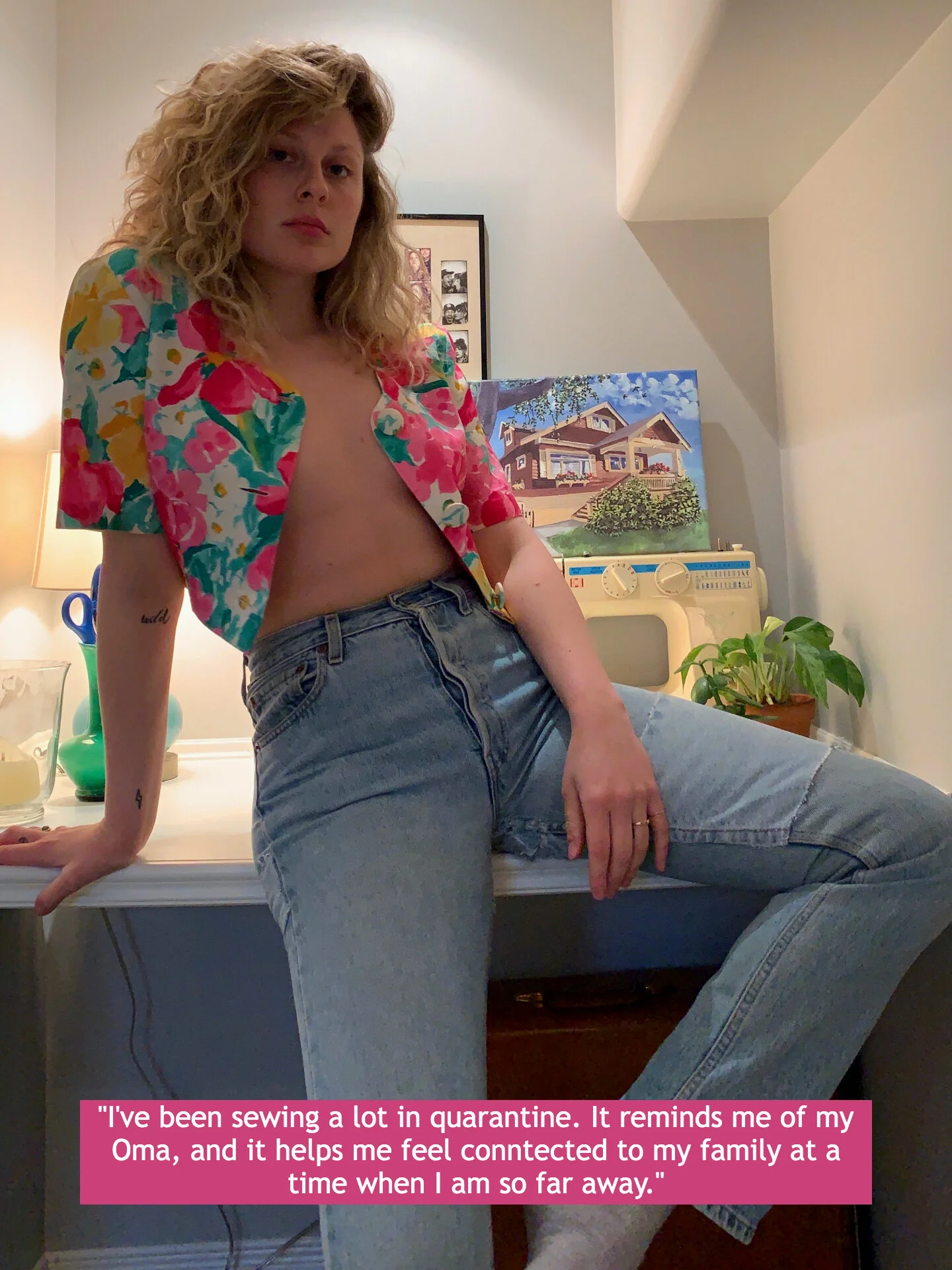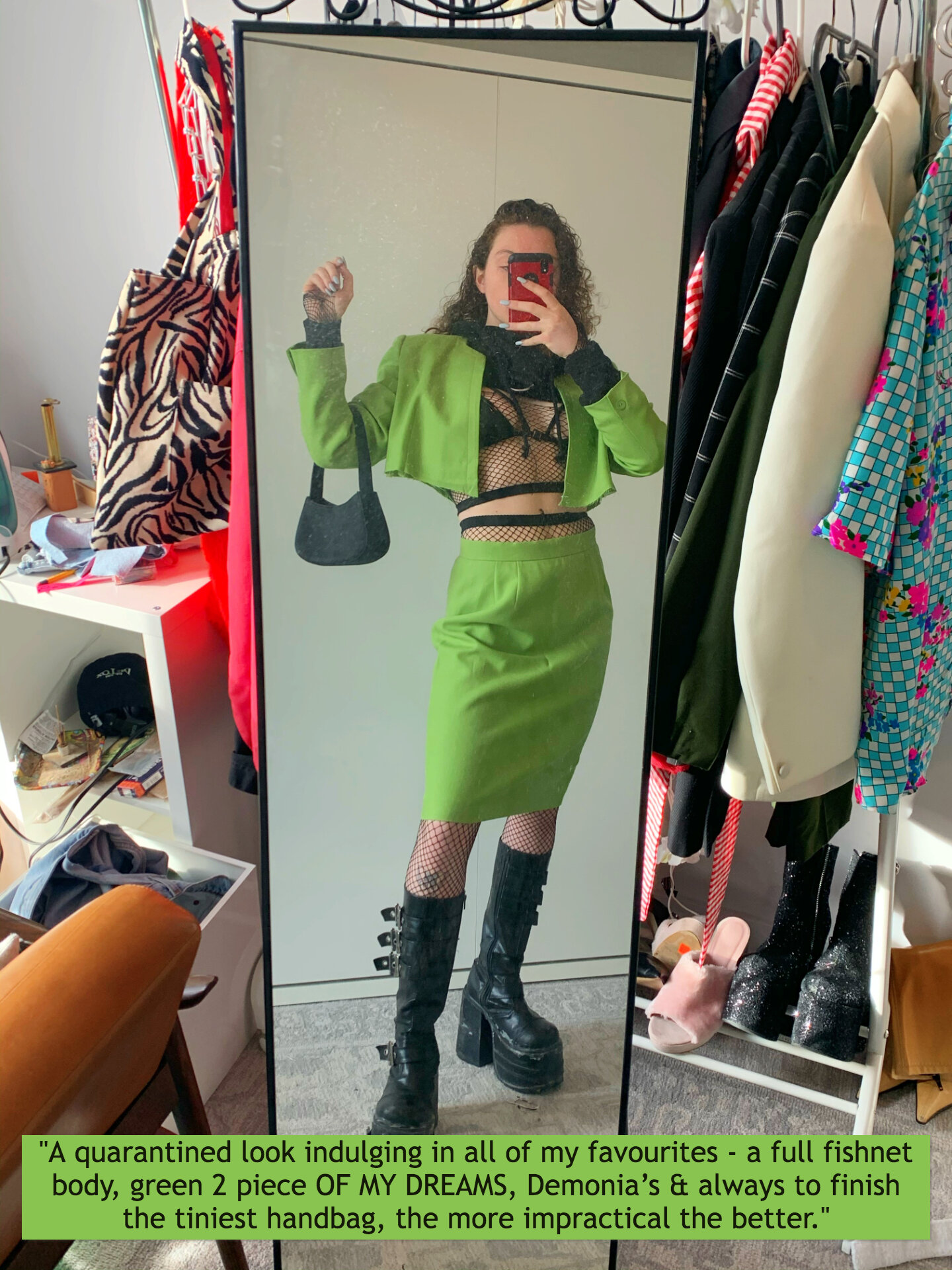The Significance of a Balaclava
Artwork by the author, Alison Margaret B. Moule
A meme that has been circulating recently illustrates a person lying on the ground, presumably unconscious, and a distressed-looking crouched figure crying out “HELP!!! Is any one of you a doctor?” One in a crowd of unalarmed onlookers replies “I can crochet a balaclava.” This occurs under the title, “Year 2030.” Many of us who have been confined to our homes throughout this 2 year-long (and still ongoing) pandemic have taken up hobbies like knitting and crochet, and this meme pokes fun at the growing winter trend of hand-made balaclavas. No, we are not doctors. We wake up feeling perilously stuck in the cycle of lockdown and gradual-reopening, unprecedented and uncharacteristic weather, minimum-wage jobs and the knowledge that even if we were doctors, we could never afford a house in this economy. So what’s the point? We are shifting away from careers that make money and towards creativity.
In pursuit of coziness
I made my first balaclava in early January of 2021, after seeing one posted on Instagram by knitwear designer and photographer, Harry Were, for sale for over $200. Unable to afford the beautiful and aptly priced hand-knit head-warmer, I set my mind to knitting my own. Although I do not know how to follow patterns, I am proficient in the binary code of knitting and purling. By trial and error, I cast on a blue merino-wool balaclava, making up the pattern as I went along.
Since that first bala (as I affectionately call them), I have knit and sold enough to cover about three months of rent. Not wanting to charge a price that I myself could not afford, while still trying to value my time that goes into hand-knitting, I sell by sliding-scale. Most people who buy my balaclavas are also students or work low-paying jobs, but are graciously willing to give up $90-130 to get their heads in a soft, hand-knit wool bala. I am curious about the popularity of balaclavas that has allowed me to make a small income by doing something that I love.
Some attribute the trend to the pandemic, as masking has been mandatory for nearly two years, and balaclavas seem to mimic the effect of a semi-obscured face. However, balaclavas were first reappearing in fashion in the pre-pandemic winter of 2018-2019. Still, I imagine there is some connection between masking to prevent the spread of COVID-19 and everyone wearing a balaclava this winter. Perhaps we appreciate the warmth that masks provide to the lower half of our faces in sub-zero temperatures, but require a more fashionable, comfortable, outdoor version of this warmth we are now accustomed to. I surmise that the trend has to do, most of all, with coziness. Winter fashion has not always been as practical. In most recent winters, we have seen more emphasis on keeping warm, with puffer jackets and wide-leg pants (with lots of room for long johns underneath). Balaclavas reject the cold ears of excessively rolled-up beanies.
Balaclavas in and against power
Balaclavas first appeared under this name in the 1880s. During the 1854 Crimean War battle —dubbed the Battle of Balaclava, after the nearby town of Balaclava, Crimea— British soldiers were sent hand-knit head and face coverings, then called Uhlan caps, to keep warm in the frigid Russian October (Richard Rutt, A History of Hand Knitting, 1987, pg. 135-138). These were no doubt knitted by women and girls, who often aided in war efforts by providing hand-knits to soldiers.
Balaclavas have this military history, and are still very much associated with violence. When I mention to a person of an older generation that I knit balaclavas, the common response is “You mean like bank robbers?” Balaclavas are commonly worn to conceal the identity of individuals committing crimes, including police and military forces. Of course, there is a difference between military-style black balaclavas, that conceal everything but the wearer’s eyes, and brightly coloured, hand-knit wool balas that encircle the wearer’s face in a way that reminds me of a well-swaddled baby. That said, it is hard to separate the garment from connotations of violence. I post selfies in my knitted balaclavas on social media with the hashtag #balaclava, and I receive messages like “Hey beautiful,” from military-fetishizing men in tight, black balaclavas. I block them with a feeling of uneasiness about my most beloved winter accessory.
Balaclavas show up also in contexts of political resistance. Balaclavas were worn by Indigenous activists in Chiapas, Mexico, during the Zapatista uprising, beginning in 1994. Face masks are not just a way for the Zapatistas to conceal their identities from an oppressive government: a Zapatista balaclava is a symbol of non-hierarchical collectivity, and a statement about the invisibility of Indigenous peoples in a colonial empire.
Band and performance art group, Pussy Riot, put a spin on the balaclava's Russian roots. Wearing bright-coloured, ski-mask style balaclavas, they retain anonymity while making a strong visual statement, in their fight for feminism and LGBTQIA+ rights in Russia and worldwide.
In Wes Anderson’s Fantastic Mr. Fox (2009), the animals wear balaclavas they call “bandit hats” when confronting antagonistic farmers who are destroying their homes. The animated comedy tells a story about land rights and habitat conservation, while using balaclavas as a symbol of resistance.
Who can cover their heads and get away with it?
Many of the folks who bought my balaclavas live in Montreal, where the cold winters welcome the warmth of the accessory, and the Quebec Bill 21 bans workers “in positions of authority” from wearing religious symbols including hijabs while at work. While a balaclava is generally knit and worn outside as a winter hat, and a hijab is generally a woven-scarf wrapped around the head and worn daily by Muslim women who choose to wear one. The visual similarities between the trendy headwear and the traditional head covering is striking to many Muslim women. Head and face coverings are politicized, and wearing a garment that conceals the head is not a choice that everyone can make safely. A balaclava worn by a white woman may be cute and unique, while a Muslim woman wearing a hijab —which covers the same features as a balaclava— may lose her job. Nuanced connections between race, religion, and our favourite winter accessory raise questions about who has the privilege to participate in this trend.
What is hand-made and what is made by hands?
The balaclava trend highlights a renewed appreciation for hand-made. In a time when many people’s main hobby is watching Netflix, we are reclaiming hobbies. We are learning how to value the work that goes into creating, when the time we put in at our day jobs is usually valued at less than $15.00/hour. Hand-knitting is anti-capitalist. Supporting friends and local makers is anti-capitalist. We understand the detrimental effects that fast-fashion has on the environment and on human rights, and we refuse to support it. While fast-fashion prices have taught us to expect cheapness (in price and quality), by hand-making, we are learning to appreciate the work that goes into making anything that we wear. In my opinion, even a shirt made in a factory in China is “hand-made,” as I don’t yet know of a sewing machine that can operate without hands controlling it.
In a global situation that feels quite apocalyptic, I fear the culmination of this winter trend that will send balaclavas to thrift stores and landfills. My hope is that we will hang on to our balas and our making-skills for a future where resistance and self-sufficiency may be more valuable than financial capital.
Alison Margaret B. Moule (they/she/elle) is a maker and lover of textiles. They graduated from Concordia University in 2020, with a BFA in Art History and Studio Art and a minor in Classical Archaeology. Their work has been published by the Concordia Undergraduate Journal of Art History (CUJAH), Yiara Magazine, Hoplon (Journal of the Concordia Classics Student Association) and the Fine Arts Reading Room (FARR). They are a current graduate student in Cultural Heritage Conservation at Fleming College in Peterborough, Ontario.

